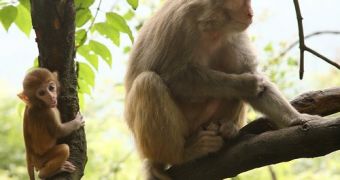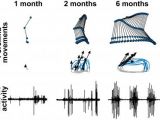Recovery after severe brain and spinal cord injury is very limited, but milder injuries are usually followed by a good functional regeneration, and a new study led by researchers in the Department of Neurosciences at the University of California, San Diego School of Medicine, proved that primates have a quite unexpected and extensive natural recovery phenomenon after spinal cord injury.
Before getting to this conclusion, UC San Diego and VA Medical Center San Diego researchers wanted to study how did the functional recovery work after mild injuries, so they focused on adult rhesus monkeys.
Surprisingly, the team noticed that the connections between circuits in the spinal cord grew again, considerably and spontaneously, and after only 24 weeks following the mild spinal cord injury, 60 percent of the connections were fully recovered.
Nobody knew or even suspected that an injured spinal cord would be able to restore such a high proportion of connections, naturally, and the researchers' amazement grew even more when they noticed that the movement on the affected side of the body was also in recovery.
Ephron Rosenzweig, PhD, assistant project scientist in UCSD Department of Neurosciences explains that “the number of connections in spinal cord circuits drops by 80 percent immediately after the injury.
“But new growth sprouting from spared axons – the long fibers extending from the brain cells, or neurons, which carry signals to other neurons in the central nervous system – restored more than half of the original number of connections.”
Normally, scientists use rodents as the traditional study model, and Rosenzweig explained that what made this discovery particularly surprising was the fact that the phenomenon did not appear in mice.
The team is now trying to find out how is the nervous system able to generate such a high growth after injury, according to senior study director Mark H. Tuszynski, MD, PhD, professor of neurosciences and director of the Center for Neural Repair at UC San Diego, and neurologist at the Veterans Affairs San Diego Health System.
This research underlines the important role of primate models in making the link between basic scientific research and practical, therapeutic treatments for humans.
The spinal cords of humans and other primates are different from rodents, in terms of anatomy and specific functions, this is why “with similar injuries, rodents show much less regrowth and recovery of limb function,” Rosenzweig explained.
The researchers' next goal is to find out what is pushing neuronal axons to grow new connections, thus recovering movement.
These discoveries could be applied to patients with severe injury to their central nervous system, Rosenzweig said, and it could also lead to the development of new treatments that would transmit high-growth signals to spinal cord damage sites and speed up their recovery.
This study was led by Rosenzweig and Gregoire Courtine of the University of Zurich in Switzerland, and was published in the advance online edition of Nature Neuroscience.

 14 DAY TRIAL //
14 DAY TRIAL // 
